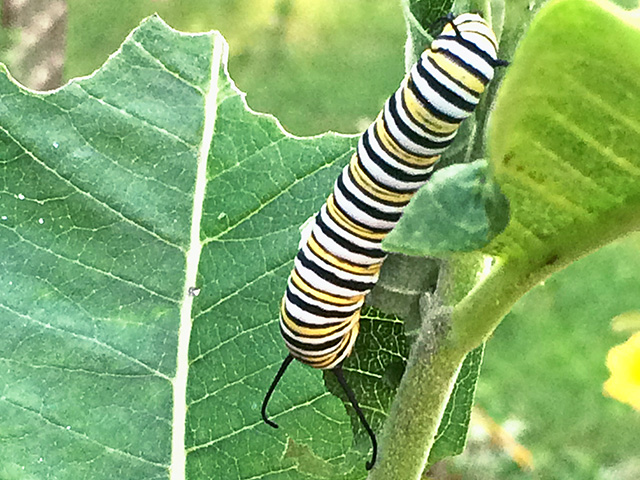Production Blog
Get Wings: Plant Milkweed
Monarchs make getting butterflies a good thing.
No need to be nervous. Joining the movement to increase monarch butterfly habitat is easy -- just plant some milkweed, said Chip Shilling, BASF Agricultural Solutions manager of sustainability.
During the past 20 years, declines in North American monarchs overwintering in Mexico and California, where these butterflies cluster, have increased concerns about milkweed habitat.
This will be the fifth year BASF has distributed milkweed plants to farmers interested in establishing habitat. "Our idea was to help encourage farmers and rural landowners who have interest in establishing small scale habitats to alleviate any concerns they might have," Shilling told DTN in an interview. Once they potentially dip their toes into growing milkweed, then they might consider larger plantings, Shilling said.
BASF's Living Acres #Monarch Challenge ships flats of 18 live milkweed plants to the first 1000 farmers eligible for the program. Deadline to apply is May 2 and plants will be shipped around Memorial Day. This year the program offers milkweed species asclepias tuberosa, sometimes called orange milkweed or butterflyweed, and asclepias incarnata, also known as swamp milkweed or pink milkweed. Both perennials have a wide native range of geography, Shilling said.
Most people start by planting milkweed in non-crop areas around a shed or in an area where plants can be easily watered to give them a good start, Shilling said. Many of the milkweed species, such as bufferflyweed can be attractive as landscape plants and attract other pollinators.
P[L1] D[0x0] M[300x250] OOP[F] ADUNIT[] T[]
"Over the years we've seen a big shift in attitude. It's no longer: Why are we planting a weed? People have genuine excitement about the program and are often sharing pictures of their habitat on our website to show what is happening in it," Shilling said.
Farmers applying for the free distribution do not have to be a BASF customer, Shilling noted. "It's great if they are, but it is not a requirement. This is all about establishing habitat," he said.
Robust conservation efforts are ongoing across many fronts to address threats to the monarch and bolster milkweed abundance. On Dec. 15, 2020, the U.S. Fish and Wildlife Service announced that listing the monarch as endangered or threatened under the Endangered Species Act is warranted but precluded by higher priority listing actions.
The Endangered Species Act provides for a warranted-but-precluded finding when the Service does not have enough resources to complete the listing process because the agency must first focus on higher-priority listing rules. Warranted-but-precluded findings require subsequent review each year until the agency undertakes a proposal or makes a not-warranted finding.
Currently, listing actions for 161 species on the workplan (64%) are a higher priority than the monarch, according to the U.S. Fish and Wildlife Service website. These species include plants, insects, freshwater mussels, fish, birds and mammals.
Obligations to meet court orders and settlements due to litigation can affect when the agency works on some species.
Because monarchs are solely dependent on milkweed during the caterpillar stage, efforts to boost the number of milkweed stems across the country are the basis for many monarch conservation plans.
To apply for BASF's Living Acres #MonarchChallenge go to: www.monarchchallenge.com/signup
For eligibility rules go to: https://agriculture.basf.us/…
For more information on programs for larger acreages: https://monarchwatch.org/…
Pamela Smith can be reached at pamela.smith@dtn.com
Follow her on Twitter @PamSmithDTN
(c) Copyright 2021 DTN, LLC. All rights reserved.




